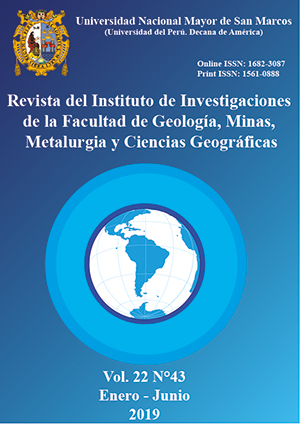Preparation of the Log type of rock - log integration and Sequential Stratigraphy methodology in the complex reservoirs of the units, Tarma-Copacabana system in Madre de Dios Basin
DOI:
https://doi.org/10.15381/iigeo.v22i43.16681Keywords:
Deposition model; rock attributes; chained systemsAbstract
Carbonaceous rocks in Peru have been little studied because of the mineralogical variability, their poorly understood sedimentation processes and the complexity of their rock attributes (porosity, permeability).
The objective of the present research is to obtain an integrated log type that serves as a standard for the elaboration of geological sections and maps, in order to establish a predictive model, in an areal distribution of potential reservoirs within calcareous units. Tarma and Copacabana groups mainly composed of carbonaceous facies, with a lower proportion of silicoclastics and evaporites, all have thicknesses ranging from 800 to 1000 meters. Within the depositional model, 4 sequences have been identified in the third order, from Continental Environments to Distal marine. It is seen that within each sequence of third order have been related up to three sedimentary courts; (Continental), transgressive and high seas (platform), which integrates them with the attributes of rock, it is identified that the levels of porosity are found in the LST and HST systems.
Downloads
Published
Issue
Section
License
Copyright (c) 2019 Edson J. Castillo Guzmán

This work is licensed under a Creative Commons Attribution-NonCommercial-ShareAlike 4.0 International License.
AUTHORS RETAIN THEIR RIGHTS:
a. Authors retain their trade mark rights and patent, and also on any process or procedure described in the article.
b. Authors retain their right to share, copy, distribute, perform and publicly communicate their article (eg, to place their article in an institutional repository or publish it in a book), with an acknowledgment of its initial publication in the Rev. Inst. investig. Fac. minas metal cienc. geogr.
c. Authors retain theirs right to make a subsequent publication of their work, to use the article or any part thereof (eg a compilation of his papers, lecture notes, thesis, or a book), always indicating the source of publication (the originator of the work, journal, volume, number and date).























